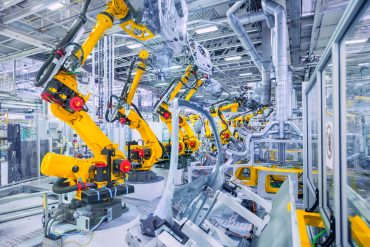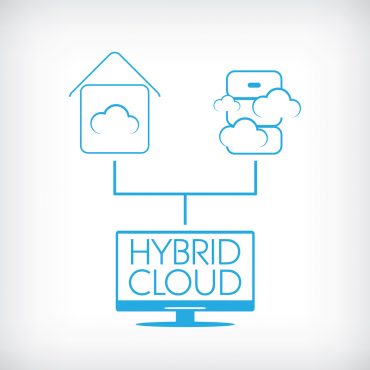
Cloud-in-a-box promises to be revolutionary for businesses across the board, taking efficiency and innovation to new heights, ultimately allowing them to delight their customers.
Imagine you’re a healthcare provider, retail chain, or large bank with hundreds of locations scattered across dozens of communities. Each location may require servers for critical business applications and an ever-increasing number of IoT devices to deliver the desired customer experience. Connecting everything to allow access to data, content, and any enterprise applications housed in remote data centers or public clouds will usually also require additional on-site network devices such as routers, firewalls, and session border controllers, among others. Enter cloud-in-a-box.
What if we said goodbye to the typical collection of disparate hardware at each site and instead used a single, more capable device that combined virtual network functions with the virtual applications required to run the enterprise? To deliver improved customer experiences, businesses like manufacturers, retailers, and hospitals can embrace the adaptability, reliability, and scalability that virtualized networks provide. Those that do can increase efficiency, reach new heights in customer satisfaction, and see reduced OpEx along the way.
Out with the old
For example, a retailer will typically have servers running applications that support secure payment processing, inventory management, Point-of-Sale promotions as well as network devices for routing, firewalls for security, and load balancing to manage connectivity to other sites, suppliers, and cloud providers.
If any one application or network function goes down or the device needs to be replaced, upgraded, or patched, IT staff are usually required to make an in-person visit for troubleshooting and maintenance. In-person visits are known to be service velocity killers and significant cost drivers. They can disrupt operations at the site for hours or days. What’s worse is that any issue, and its associated costs, can crop up in multiple sites simultaneously, multiplying the time and money required to get sites up and running again.
Virtualization eliminates this kind of business disruption. Better yet, it supercharges innovation, eliminating pains while delivering gains at the same time.
Smartphone-izing the branch
Cloud-in-a-box, which is perhaps more commonly referred to as “Business in a Box” or “Infrastructure in a Box,” is ushering in a new era of efficiency and innovation for enterprises in our increasingly application-heavy world. With this approach, business applications and Virtualized Network Functions (VNFs) are rolled into a single physical device, which sits at the edge and is managed from a central location.
Think about when you install or update an application on your smartphone; what if a technician had to meet you in person rather than just clicking a button yourself? That would take a lot of time, money, and resources to happen since applications are constantly being updated.
With smartphones, we’re able to download new applications and updates as fast as download speeds permit. New security patches and features are rolled out within minutes, and developers are able to use insights from application usage to optimize and improve the user experience.
This scenario is the reality for enterprises today – as workloads are moving more quickly, the virtualized edge enables quicker innovation and faster deployment of applications to branch locations.
In with the new: unpacking cloud-in-a-box
Let’s look at a manufacturer as an example. Smart milling machines within this enterprise’s Industrial Internet of Things (IIoT) require low latency to function at their designed precision. They are able to run unique IIoT and private 5G applications. With a cloud-in-a-box deployment, all applications and VNFs can be deployed across all plants, regardless of where they’re based in the world. That increases consistency, improves reliability, and provides additional paths for business continuity. These intelligent cloud platforms allow the development of applications that improve process controls, assist inventory tracking, and provide real-time performance measurement. They can provide insight from different manufacturing operations management systems and aid in accelerating root-cause analysis.
Service providers can generate new revenue by providing both the onsite cloud-in-a-box capabilities as well as by providing multi-tenant application hosting/compute capabilities in a central office serving multiple customer locations in a metro area.
How close are we to this technology being a reality? Closer than you may think! To get there, we need software-enabled adaptive networks with open architectures, which not only allow service providers to adaptably support multiple customers with a variety of application needs but which also allow enterprises the choice and flexibility of VNF and application vendors in a “best-of-breed” method. According to our estimates, this can save the business up to 40% in OpEx.
Cloud-in-a-box is set to provide a way for us to make the management of branch IT simpler. This promises to be revolutionary for businesses across the board, taking efficiency and innovation to new heights, ultimately allowing them to delight their customers. Service providers must now aim to do the same.




























